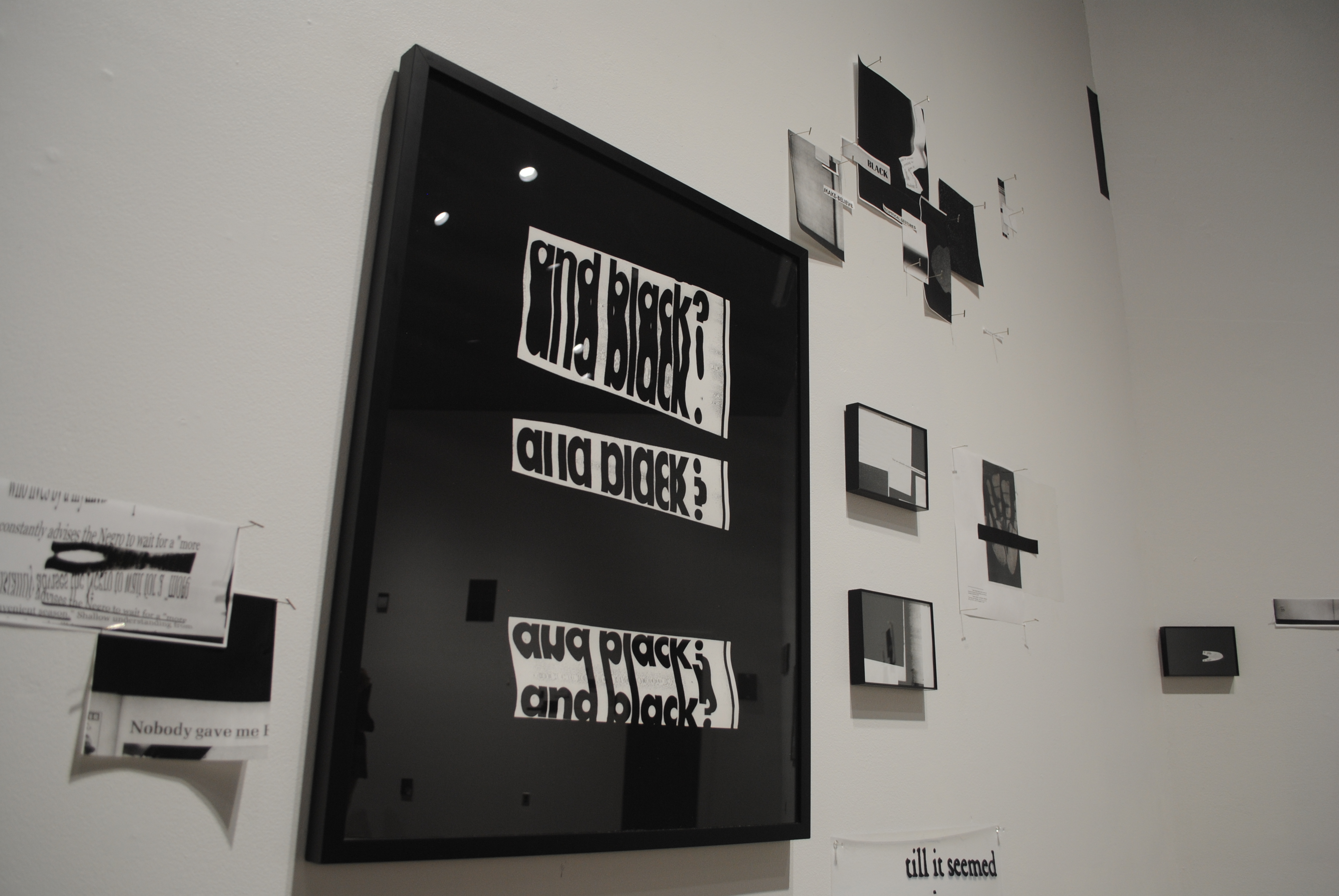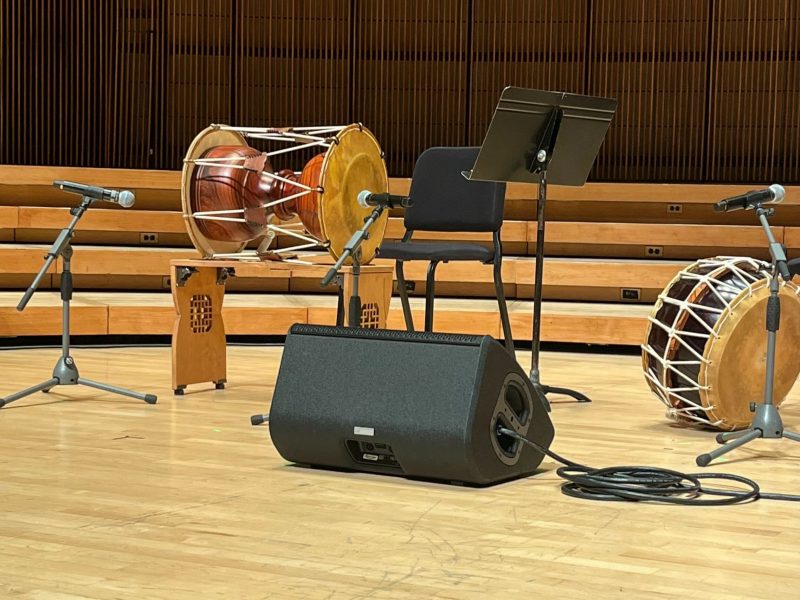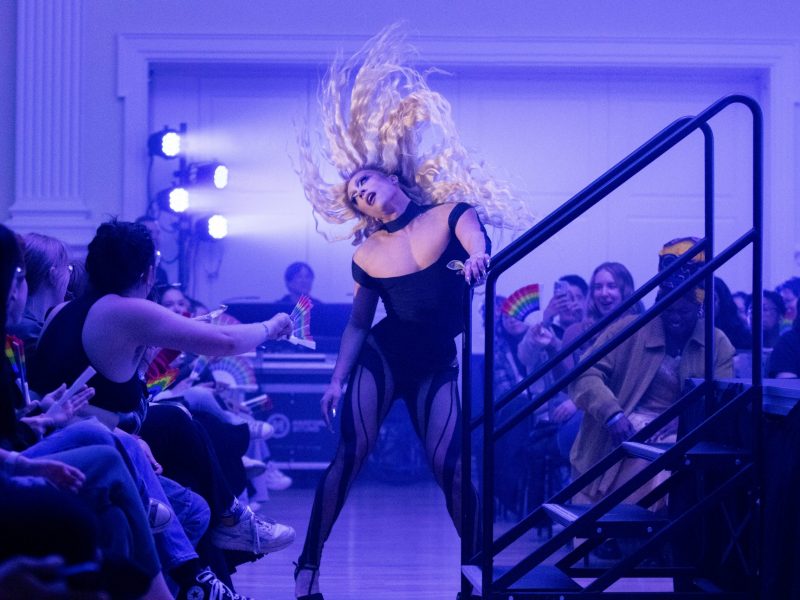When I think of installation art, I think of dazzling visuals. I think of large spaces filled with three-dimensional shapes that engage your senses. Admittedly, I think of its social media friendliness.
But Kameelah Janan Rasheed’s “Unto Itself,” an installation that interacts with the audience using solely black-and-white-printed text, encapsulates its viewers as it transforms their perception of language, history and the space of the artwork itself.
Unto Itself, which opened Sept. 19 at the Herman Maril Gallery in the Art-Sociology building, brings a variety of printed materials to life on the walls to create a single space where viewers can construct their own meaning from the artwork.
The exhibit combines printmaking, digital collage and Xeroxes of cut-off text, delicately placing them on the walls in sets or as stand-alones to demonstrate how fluid and unpredictable language can be.
The show, curated by 2017 Dorsey Prize winners Raino Isto and Cecilia Wichmann, was originally created for the Future Generation Art Prize exhibition at the Pinchuk Art Centre in Kiev, Ukraine, in the spring. Isto and Wichmann, graduate students in the University of Maryland’s art history department, worked with the contemporary art purchasing program this past year to select works for permanent acquisition at Stamp Student Union.
Intrigued by Rasheed’s interest in spatializing history, they saw the installation as a good opportunity for the campus community to experience important art in an intimate space.
“I was really curious to see how it would move through different spaces and transform in a way depending on both the physical architectural space it was in and the population of viewers most likely to come through that space, ” Wichmann said.
Indeed, “Unto Itself” is particularly important during today’s political climate. The exhibit, through its display of warped text, demonstrates how language — and, by extension, history — can be changed over time, forcing the viewer to think about social and identity issues.
Void of vibrant colors or towering objects, the exhibit is probably not the place for a photo op. With bits and pieces of text on each wall, the viewer is forced to puzzle things together, providing a great framework for thinking of contemporary issues.
“Working with the art honor students to install this show was a great way to think about unfolding an archive in space,” Isto said. “Actual printed materials were reinterpreted, scanned, gone over, cut up, repurposed and then spread across space in a particular way, which is also a good way to think about spatializing history.”
Rasheed built a map on a series of diagrams for each wall to alter the exhibit for the Maril gallery. Art honors students unwrapped groups of pieces of Xerox paper sent in sets by Rasheed and then placed the objects with extremely precise spacing.
Senior studio art major Esther Lee, who helped set up the show with other art honors students, said “Unto Itself” demonstrates a pleasant shift in installation the school has displayed.
“Most installations that I’ve seen are usually more focused on typical traditional art forms,” Lee said. “This is different because it’s not sculpture. It’s not paint. It’s Xeroxed copies. It’s a lot of text. … Rather than looking at the pieces and leaving, you’re forced to read it, and if you really want to get the full experience, you have to examine each piece.”



